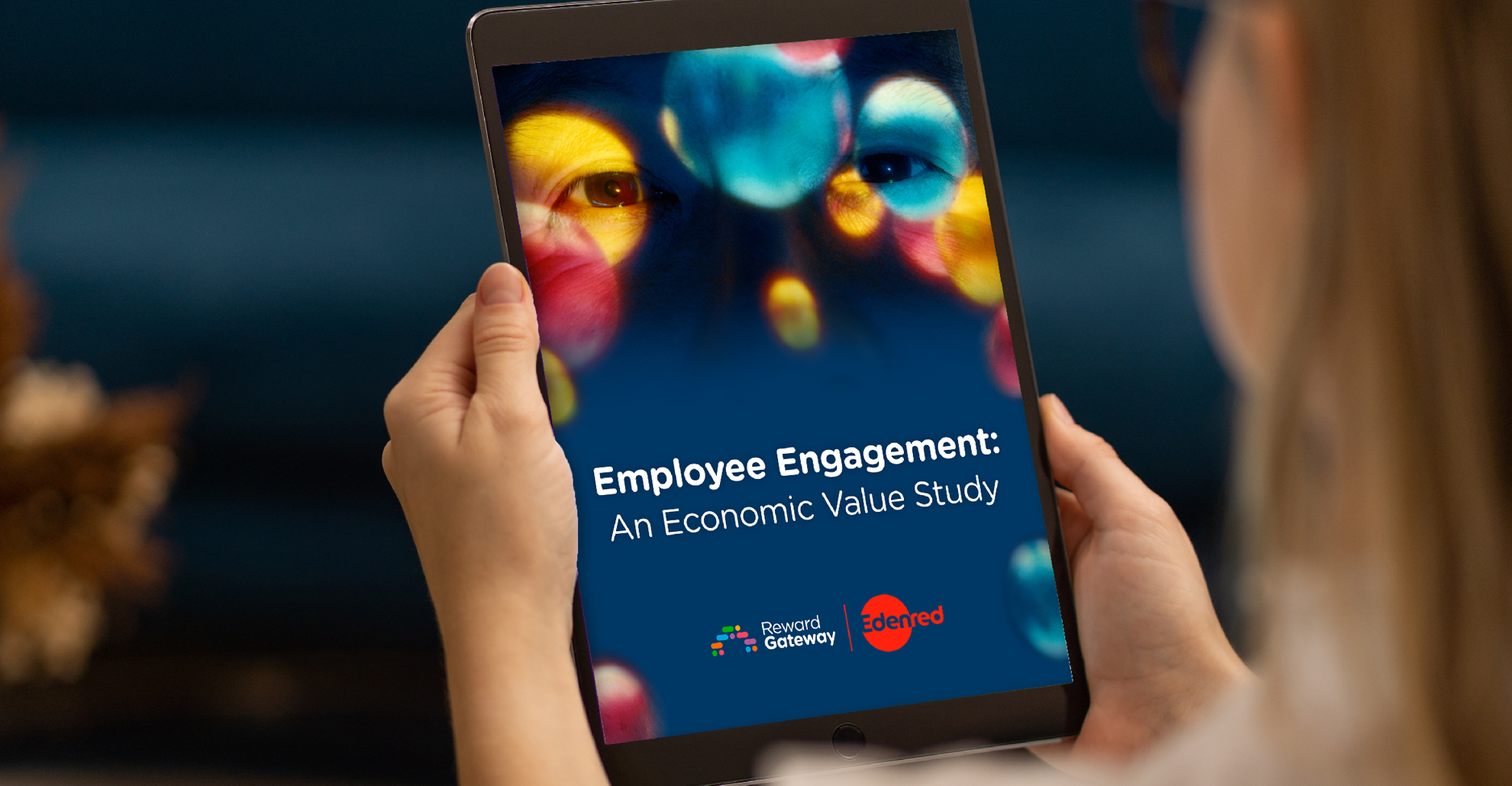Part two: How to create an unforgettable employee experience with your rewards system
Building a reward and recognition platform that’s built for your people’s needs takes effort, but it doesn’t have to be overwhelming. In part one of this series, we introduced you to our step-by-step process to building a successful R&R program and uncovered how to involve your employees in the platform build to increase awareness and participation.
Next, I want to dive into two keys of creating an unforgettable employee experience within your reward and recognition framework: transparent and simple reward redemption, and open and honest communication.
1. Introduce meaningful reward and easy redemption
 Ensuring that employees have choice and flexibility when it comes to redeeming their rewards is essential. Rewards that positively affect employees' lives and are meaningful to them will have a greater impact on employee morale, and will motivate employees to keep giving their best.
Ensuring that employees have choice and flexibility when it comes to redeeming their rewards is essential. Rewards that positively affect employees' lives and are meaningful to them will have a greater impact on employee morale, and will motivate employees to keep giving their best.
Reward budgets will look different in every single business but my tip here is no matter what your budget, ensure your people know the value of their contribution and how this translates to reward.
This will help in the long run when you are trying to reinforce impact on organisational success.
Here’s an example of what the recognition and reward framework could look like with a simple budget allocation, using some of the layers of the Recognition and Reward Pyramid:
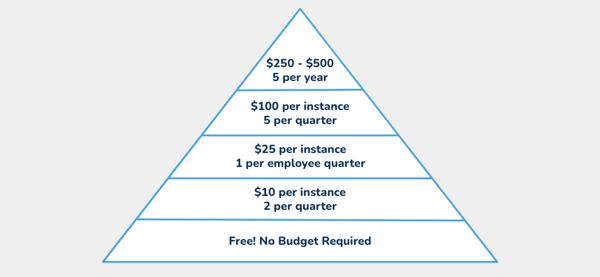
Below are some ways you can use rewards to achieve different outcomes:
Employee-nominated rewards
Nomination programs offer endless flexibility. It’s a tier of recognition that gives any employee the chance to identify when they see great behaviour and gives leaders the option to evaluate and give their people direct feedback on the nominations. HR leaders can also decide whether they want to include approval processes for these types of nominations and a budget for reward.
Manager rewards
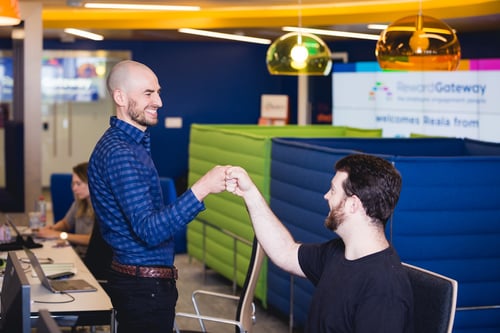 This tier gives people leaders the tools, education and permission to ‘just get on with it’ and reinforce excellent contributions and business outcomes. It gives managers encouragement and responsibility for giving regular, positive feedback, and gives way to mentor opportunities. This tier also gives HR and business executives insight into which managers do contribute to a culture of recognition and those that may need more prompting or support and training in this space.
This tier gives people leaders the tools, education and permission to ‘just get on with it’ and reinforce excellent contributions and business outcomes. It gives managers encouragement and responsibility for giving regular, positive feedback, and gives way to mentor opportunities. This tier also gives HR and business executives insight into which managers do contribute to a culture of recognition and those that may need more prompting or support and training in this space.
Service or tenure rewards
To help build brand loyalty, many companies are choosing to celebrate tenure earlier (as early as one year) where they might have waited for a five or 10 year anniversary in the past.
This approach is usually non-monetary, and more and more companies are moving towards allocating larger portions of their reward budget to recognising impact throughout the year, instead of waiting for a work anniversary. Moving beyond service awards reinforces the message that employee contribution and impact matters all-year-around.
Pairing this with a clear understanding of the value of rewards and a seamless redemption experience that employees can take advantage of at any time means as an employer, you can send your people something meaningful and motivating, while making a tangible impact to their day-to-day lives both inside and outside work. Instead of waiting years, you can use any moment through the year an opportunity to connect individuals to a positive experience of your employer brand and generate positive talkability.
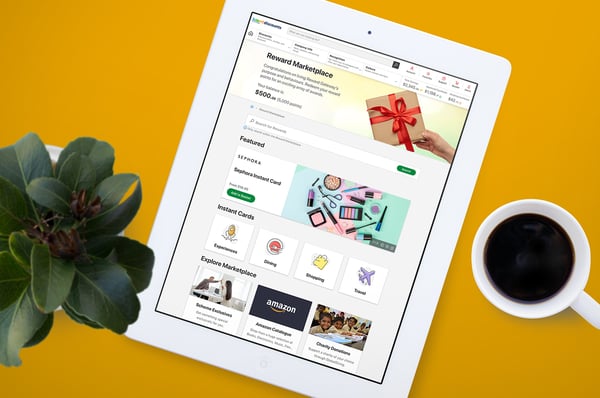
Our Reward Marketplace allows employees to redeem their reward from a large selection of retailers, giving employees the gift of choice.
2. Drive adoption and increase participation in the program
Almost every single time we run a webinar about employee reward and recognition, we get a question about how to increase adoption and participation in a company recognition program.
The analogy I often use to help HR leaders ‘keep the flame alive’ is to treat their program like any other subscription service or membership product (e.g. a gym membership). You might launch your recognition program with a big bang, ensuring new employees know what it is, where to find it and how to get involved, but (like the gym) competing priorities mean employees can forget about or neglect the program.
Employees need constant reminders to keep up the practice and strengthen their recognition muscles!
To achieve this, think like a marketer. They don't just put out advertising when the new gym opens, they will continually remind you that it is there, and how to use it and remind you of the benefits of using the equipment or joining the classes.
Constant communication is key
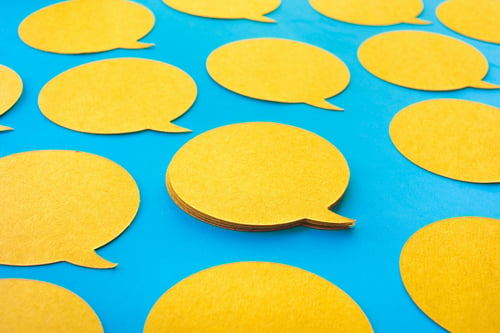 Keep communication about your reward and recognition brief but educational: if your platform allows, set up automatic alerts so people remember to recognise their peers. Provide hints and tips and practical examples of what they might recognise their colleagues for. Remember that you have new managers joining or being promoted throughout the year, so make sure education about how to use their Manager Reward process is part of your new manager induction process.
Keep communication about your reward and recognition brief but educational: if your platform allows, set up automatic alerts so people remember to recognise their peers. Provide hints and tips and practical examples of what they might recognise their colleagues for. Remember that you have new managers joining or being promoted throughout the year, so make sure education about how to use their Manager Reward process is part of your new manager induction process.
Use every communication channel available to make R&R part of your company vernacular: email, video, messaging, company all-hands, training, team meetings - you name it, R&R should make an appearance somehow:
| Emails, social networks, intranet, digital networks | Videos, webinars, TV screens, meeting backgrounds, Splash screens | Printed flyers, posters, flyers, postcards, desk/site drops |
| Champions program + manager briefing packs | On-site roadshow (if allowed) | Branded merchandise |
And finally, ensure your top leaders are part of delivering this communication too. Genuine buy-in from the top tiers of your organisation is a large portion of the task and will set the tone for how important R&R really is at your company. When employees see that genuine recognition and reward is practiced at every level of the organisation, it embeds this as a non-negotiable in the employee experience.
Ready to start your reward and recognition journey?
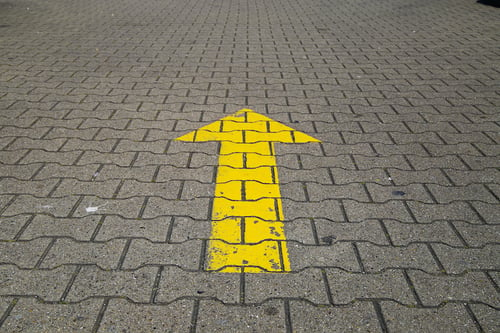 Employee reward and recognition is a powerful way to provide your people with the frameworks, rhythms and tools to provide each other visibility and validation. As more organisations grow into dispersed, remote or hybrid work modes, peer-to-peer recognition and manager-rewards are opportunities to enable frequent and multi-directional feedback and create moments of connection across your business.
Employee reward and recognition is a powerful way to provide your people with the frameworks, rhythms and tools to provide each other visibility and validation. As more organisations grow into dispersed, remote or hybrid work modes, peer-to-peer recognition and manager-rewards are opportunities to enable frequent and multi-directional feedback and create moments of connection across your business.
This post covers the basics of developing your R&R strategy, but if you would like to explore this topic in more detail, our team would love to support you! Get in touch with us today:
 Kylie Terrell
Kylie Terrell




